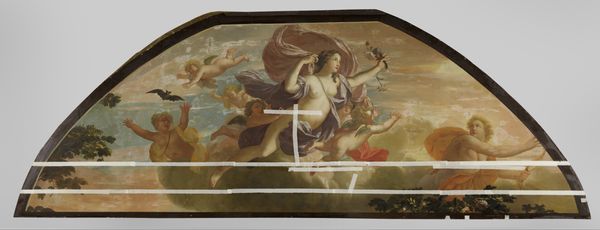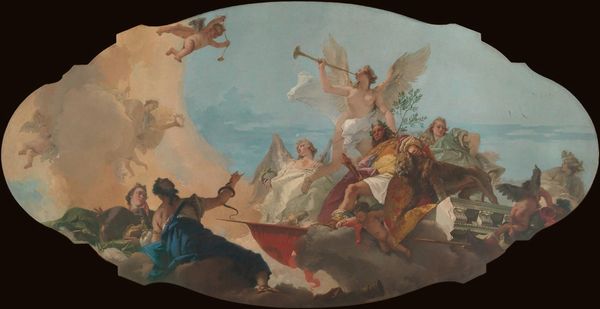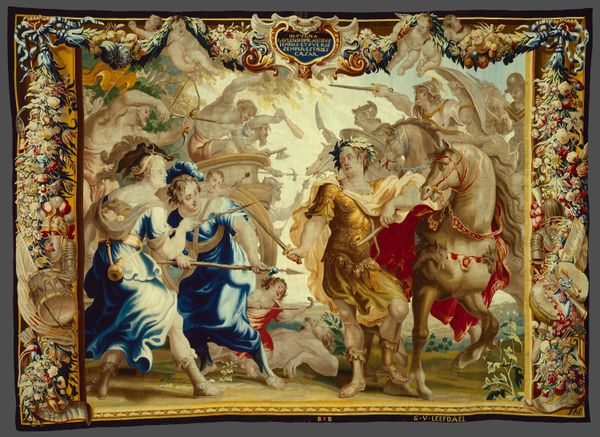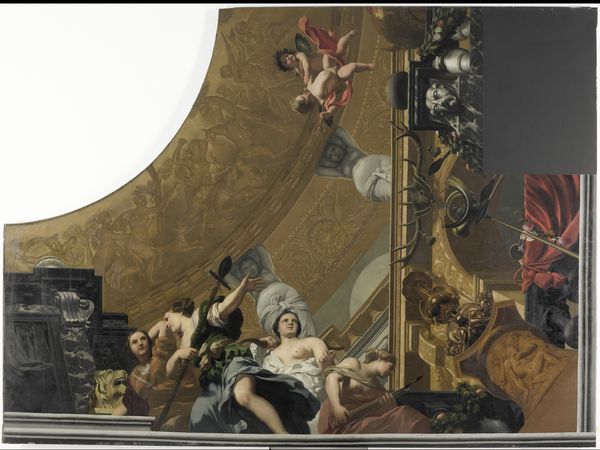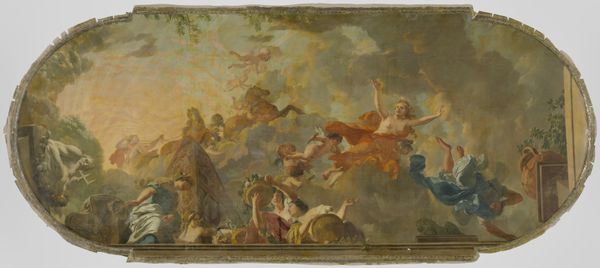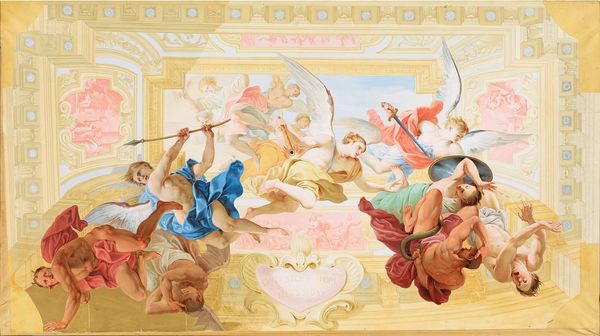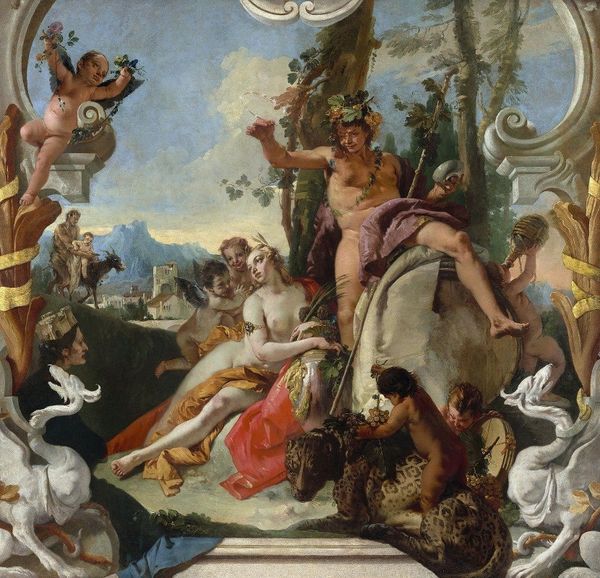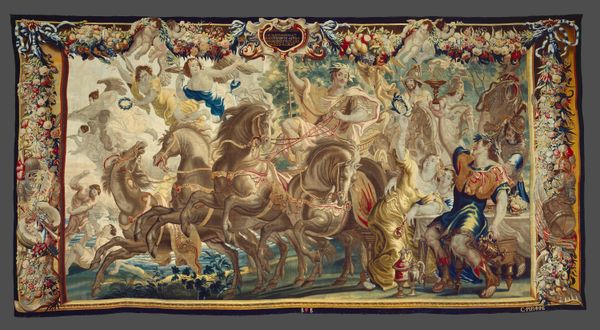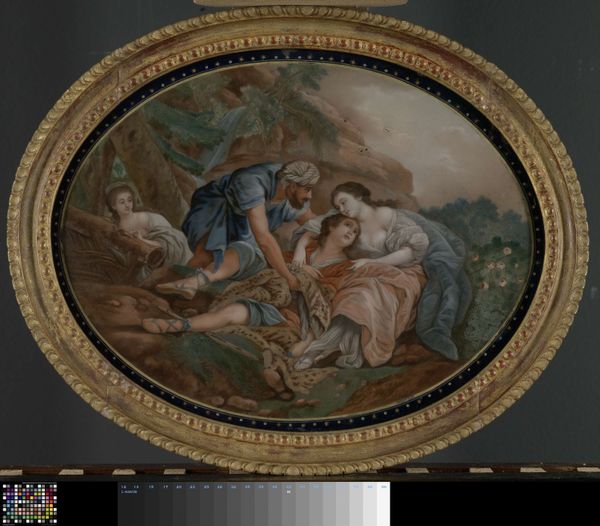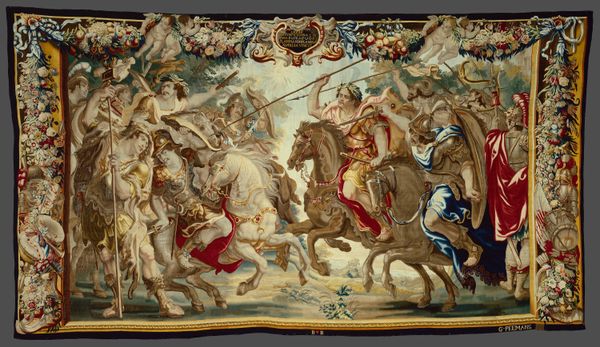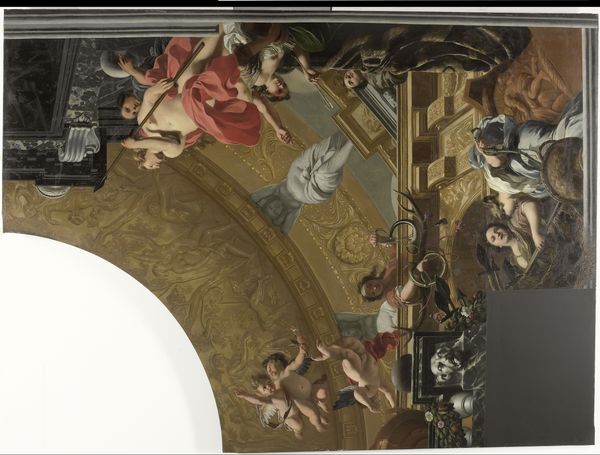
Plafondschildering met allegorische voorstelling van de Avond c. 1666 - 1695
0:00
0:00
painting, oil-paint
#
allegory
#
baroque
#
painting
#
oil-paint
#
figuration
#
oil painting
#
history-painting
Dimensions: height 206 cm, width 513 cm, depth 19 cm
Copyright: Rijks Museum: Open Domain
Theodoor van der Schuer made this allegorical ceiling painting of the evening in an unknown medium sometime in the 17th century. The image is teeming with Greco-Roman mythological figures. The woman at its center, adorned with a wreath, likely represents evening. Note how the putti, or cherubic figures, and the presence of grapevines suggest a sense of bacchanalian revelry. The work calls on the artifice of illusionistic painting, a technique common in baroque ceiling painting. Made in the Netherlands, this work emerges from a context of relative religious tolerance and a wealthy merchant class. The art market in the Netherlands encouraged artists to create works for private homes, as well as for the church. This fashion for art created an environment for the baroque style to flourish, despite the strong presence of the Protestant church. By researching Van der Schuer’s patronage network and the original location of this painting, we can better understand the social function of art in the Dutch Golden Age.
Comments
No comments
Be the first to comment and join the conversation on the ultimate creative platform.
